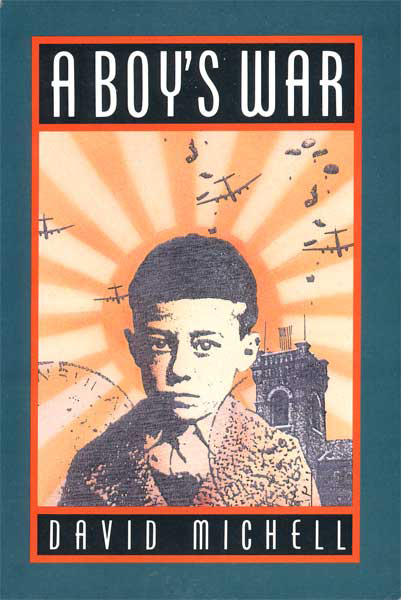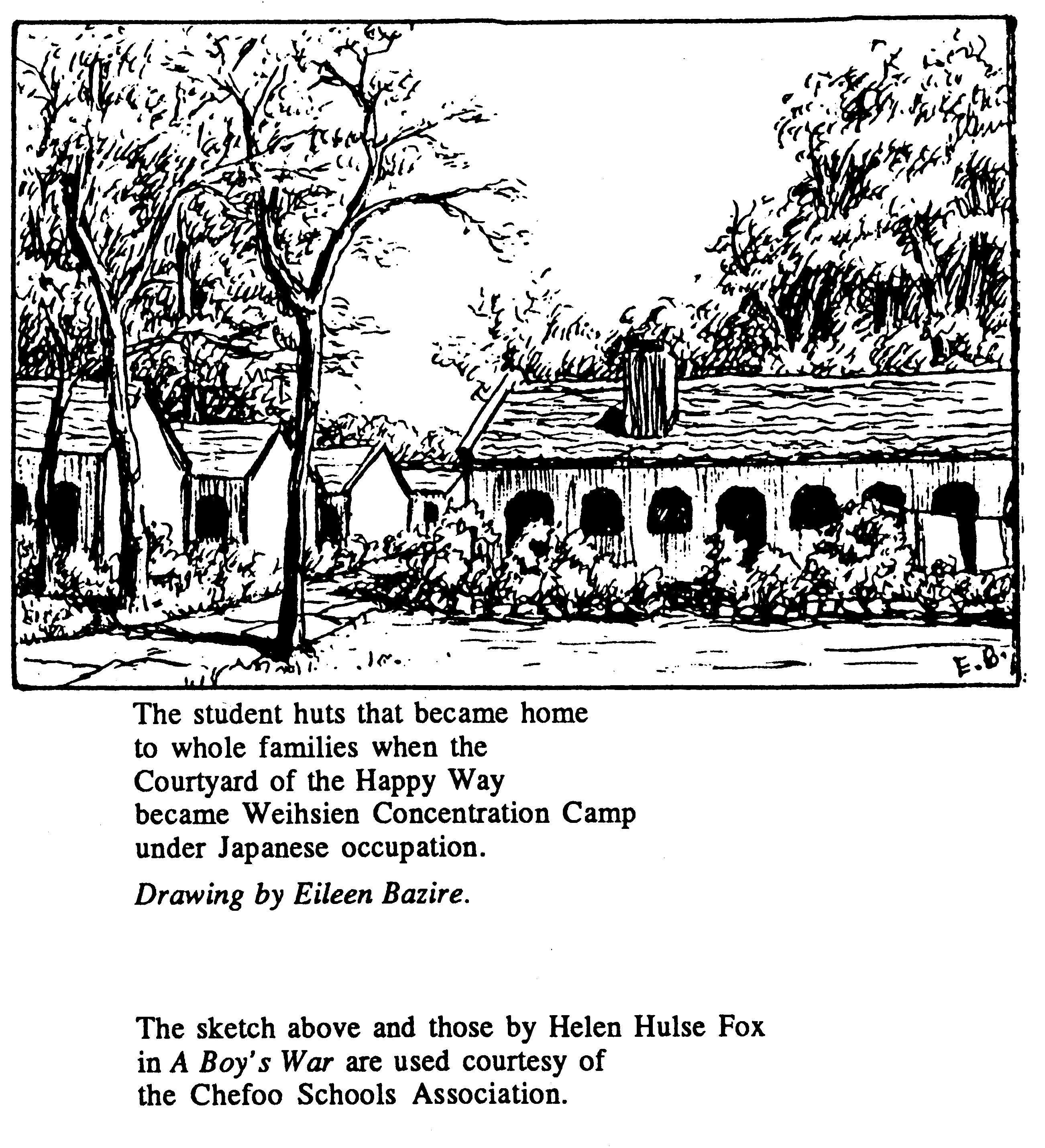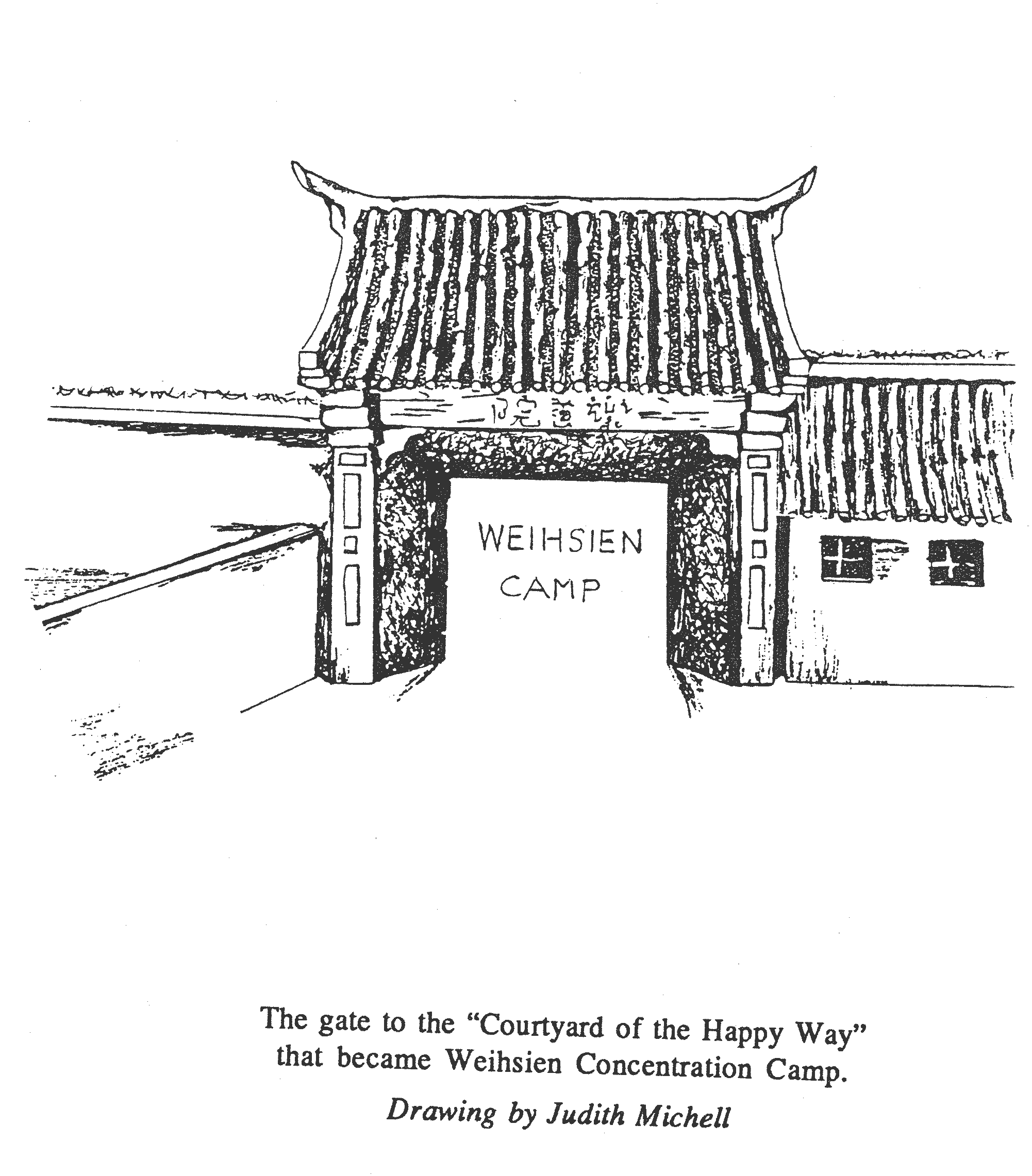
by David Michell
[excerpts] ...
 ...
...
Food and freedom were probably the major topics of conversation. The camp was organized into three kitchens, staffed by internees. Hands that were totally unaccustomed to the culinary arts were soon turning out fancy-named items which appeared on the daily menu board. These mysterious products completely belied their humble origin from turnips, eggplant and cabbage with occasional squid, fish or what could aptly be described as “no-name” meat. Actually, it had a name—it was either horse or mule. Morning, noon and night we lined up in long queues for our portion of food and then sat down at rough-hewn tables and benches. Servers had to try and be scrupulously fair, or there were complaints.
A typical camp menu would be: Breakfast—two slices of bread (often hard and flat if the yeast supply was low) and millet or sorghum porridge, with sugar on very rare occasions; dinner or lunch—hash or stew including mushy eggplant, popularly called “S.O.S.” (“Same Old Stew”), and occasionally dessert; and supper—usually soup, which was often a watered-down version of S.O.S.
 “As the diet was lacking in calcium (no milk, no cheese, no ice cream),” Evelyn Davey remembers, “we collected the shells from the black-market eggs, ground them into a powder and fed it to the children by the spoonful. We also gathered certain weeds around the compound and cooked them into a spinach-like vegetable to supplement the rations. Fruit, apart from a few apples, was almost unknown, and one little girl in school asked, ‘What is a banana?”
“As the diet was lacking in calcium (no milk, no cheese, no ice cream),” Evelyn Davey remembers, “we collected the shells from the black-market eggs, ground them into a powder and fed it to the children by the spoonful. We also gathered certain weeds around the compound and cooked them into a spinach-like vegetable to supplement the rations. Fruit, apart from a few apples, was almost unknown, and one little girl in school asked, ‘What is a banana?”
Second helpings of anything were very rare. When one fiveyear-old discovered that she was allowed a second drink of water at playtime, she shouted excitedly to the others, “Hey, everybody, seconds on water!”
However, there were times of feast as well as fast. Each Christmas special items that had come in through the Red Cross were saved up and used to provide something special. Mrs. Lack on our school staff, wanting to make the Chefoo Foundation Day occasion one to be remembered, pled the children’s cause to the Japanese, and her pleading brought results, with the supply of extra flour. With a number of the other staff ladies helping, they mixed up Chinese dates, sugar, peanut oil and flour and managed to produce about 88 pounds of cake.
Encouraged with this success, the ladies attempted even wedding cakes! At least two of our staff got married in Weihsien Camp—Ruth Greening married Buddy Price; and Jeannie Hills married Joe Cotterrill. They had met each other for the first time in camp. This is how Mrs. Lack describes her cake-making enterprise:
We made up our minds that as the cake was about all we could give, we would give our best. One hundred and fifty guests were invited, including all children in the Senior School ... Everyone made contributions. I also collected apricot stones from people who had been fortunate enough to get a few apricots, and these made lovely almonds. Also bits of orange and pumelo skin, some nearly two years old, were added. It grated up beautifully and gave the flavor which was all that mattered. We managed to collect two pounds of sugar altogether for this special cake, using a quarter of it for the cake and the rest for icing purposes. With a few real sultanas from our Red Cross parcels and a little dripping given me from one of the kitchens, plus oddments of spice and cinnamon, we set about this cake-making with a professional feeling. Lots of Chinese dates helped to make the mixture sweet. The tins were anything except cake tins, but we managed to get three sizes of right proportions, including a powdered milk tin for the top tier. The baking took five hours in a kerosene tin oven. The decorations were made from silver paper or tin foil. The pillars of wood were covered with tin and then polished. Someone lent a cake icing outfit and with some persistence we managed to make a boiled icing work for decorations. The ornament on the cake, a Gothic arch, I made from a strip of tin released on opening a tin of milk. This was covered with white tape and lilyof-the-valley, (a bunch of artificial flowers I had worn for five summers), with little bits of green here and there and with little bells hanging on the top gave it the finished look. The children loved pre paring for the wedding, and we all looked upon it as a jolly good excuse for a cake.
What a celebration it was too!



[further reading] ...
http://www.weihsien-paintings.org/books/aBoysWar/ABoysWar(LaTotale)-pages.pdf
#








